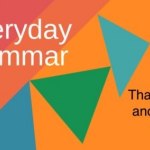23 August, 2019
This week we answer a question from Pakistan. Shahid writes,
Question:

Ask a Teacher
Please explain about "more" and "many." What is the difference between them?" – Shahid, Pakistan
Answer:
Dear Shahid,
The words "more" and "many" do appear to be similar in meaning. Both are adjectives, and one is sometimes an adverb. Here is the difference:
"Many" is used when something can be counted. Here's a example of how to use "many" in a question.
"How many people marched in the parade?"
Many is an adjective describing people. What kind of people? Many people. It might be a very large number, but you can still count the number of marchers in a parade.
Now, we turn to the word "more." You can use it with things you cannot count.Let's hear how to use it in a question:
"Would you like more tea?"
What kind of tea? The answer is more tea, but you are not specific about how much more.
As an adverb, "more" is often used to compare two things, sometimes with the word "than" following it:
"There were more people on the train than usual."
Here is another sentence where "more" is used as a comparison adverb:
"I like to eat more food than my brother."
You are comparing two people: you and your brother. One person eats more food than the other.
"Keep coming to VOA Learning English, and you will learn more about American English!"
And That's Ask a Teacher!
I'm Anne Ball.
Anne Ball wrote this story for VOA Learning English. George Grow was the editor.
Do you have a question for the teacher? We want to hear from you. Write to us in the Comments Section.
_
Words in This Story
piano – n. a large musical instrument with a wooden case and metal strings
specific – adj. special or particular
emphasis – n. something of special importance or value










